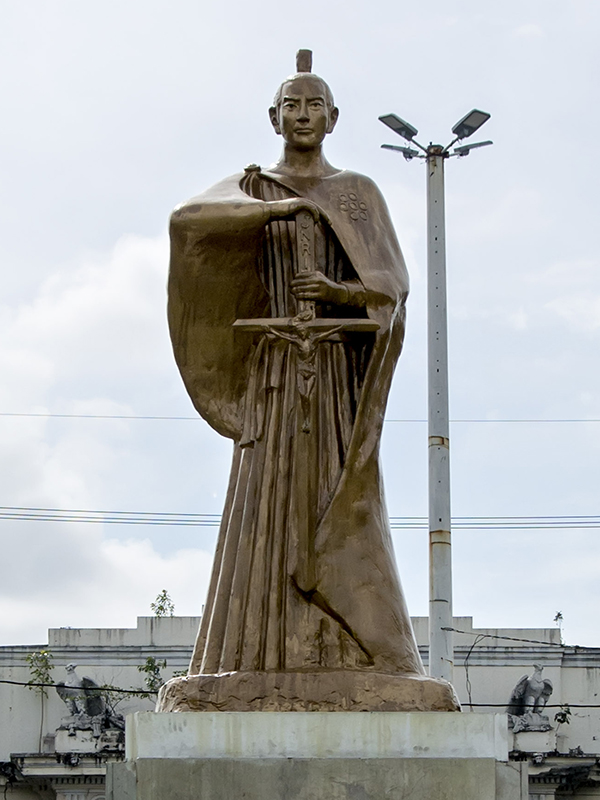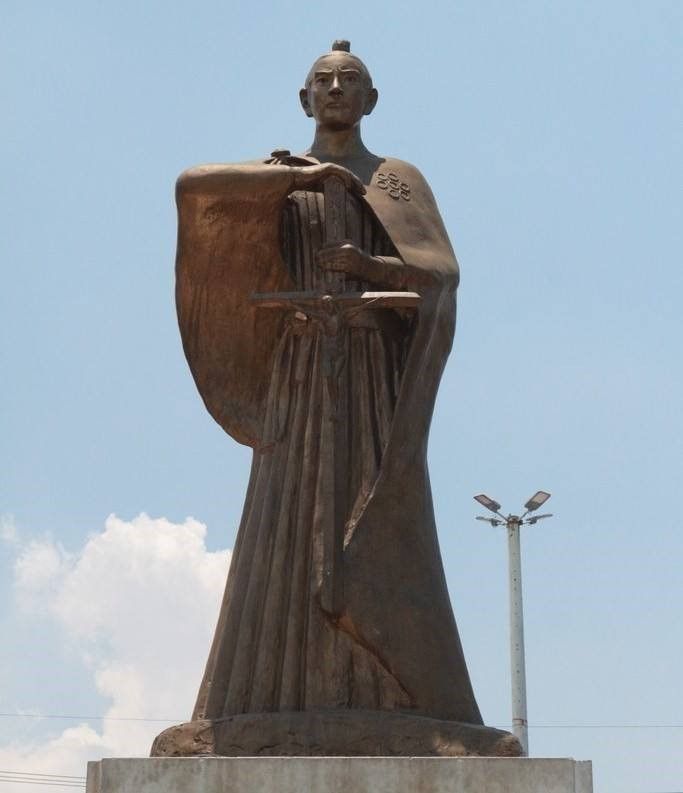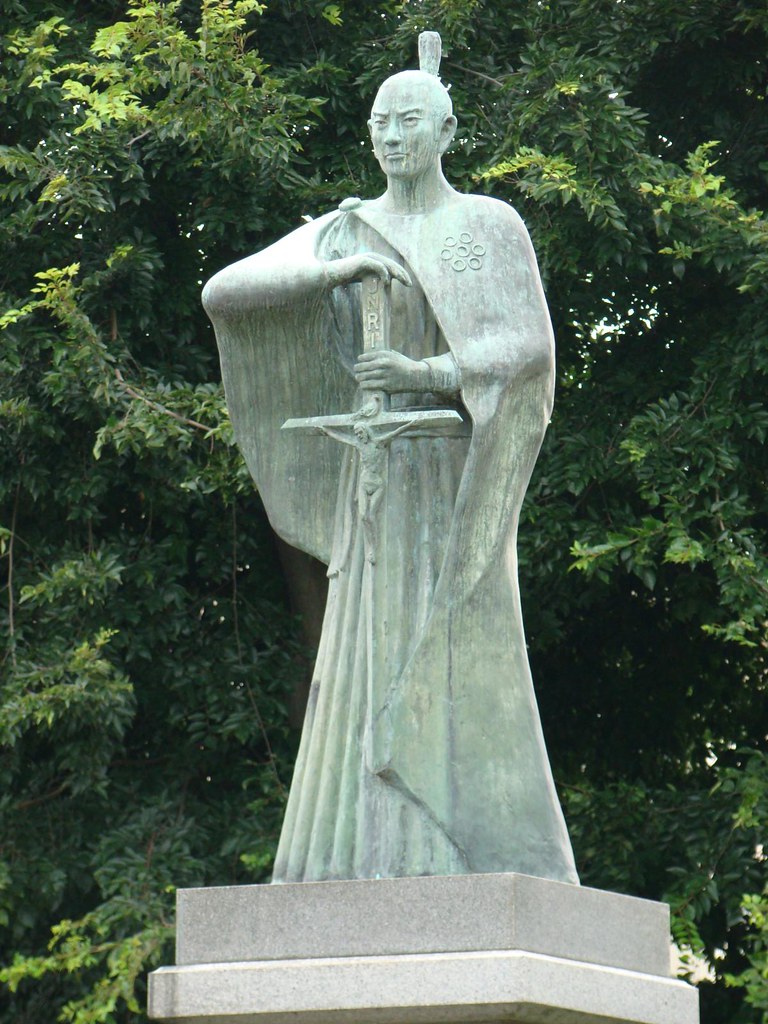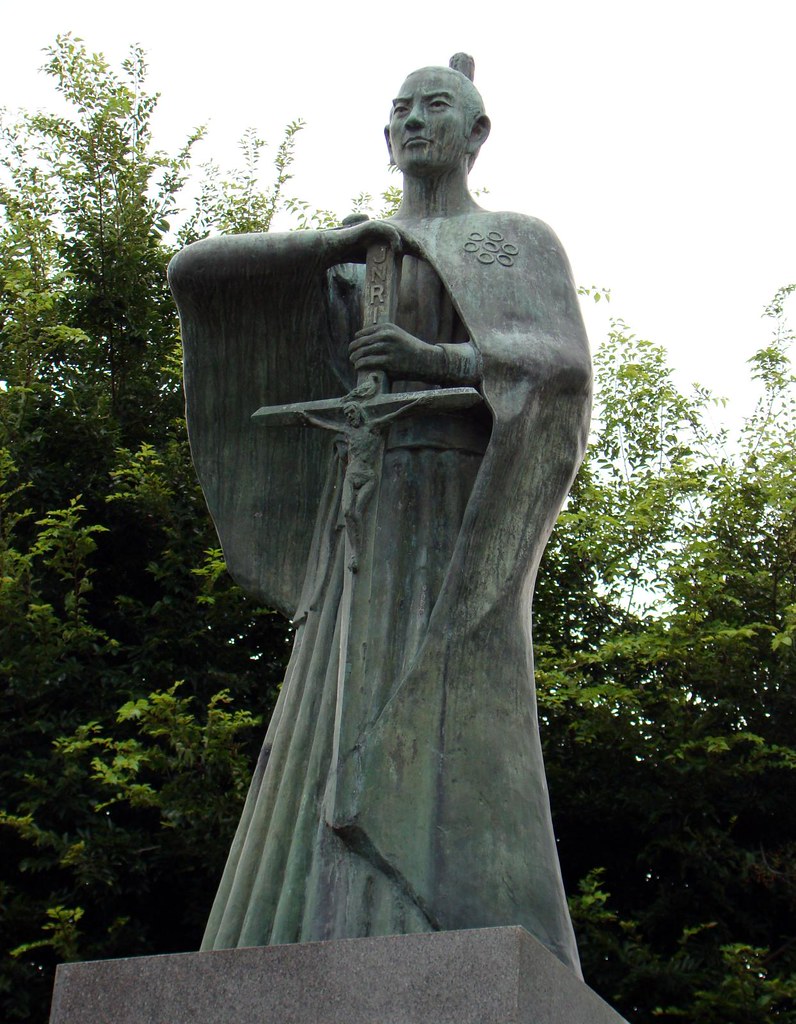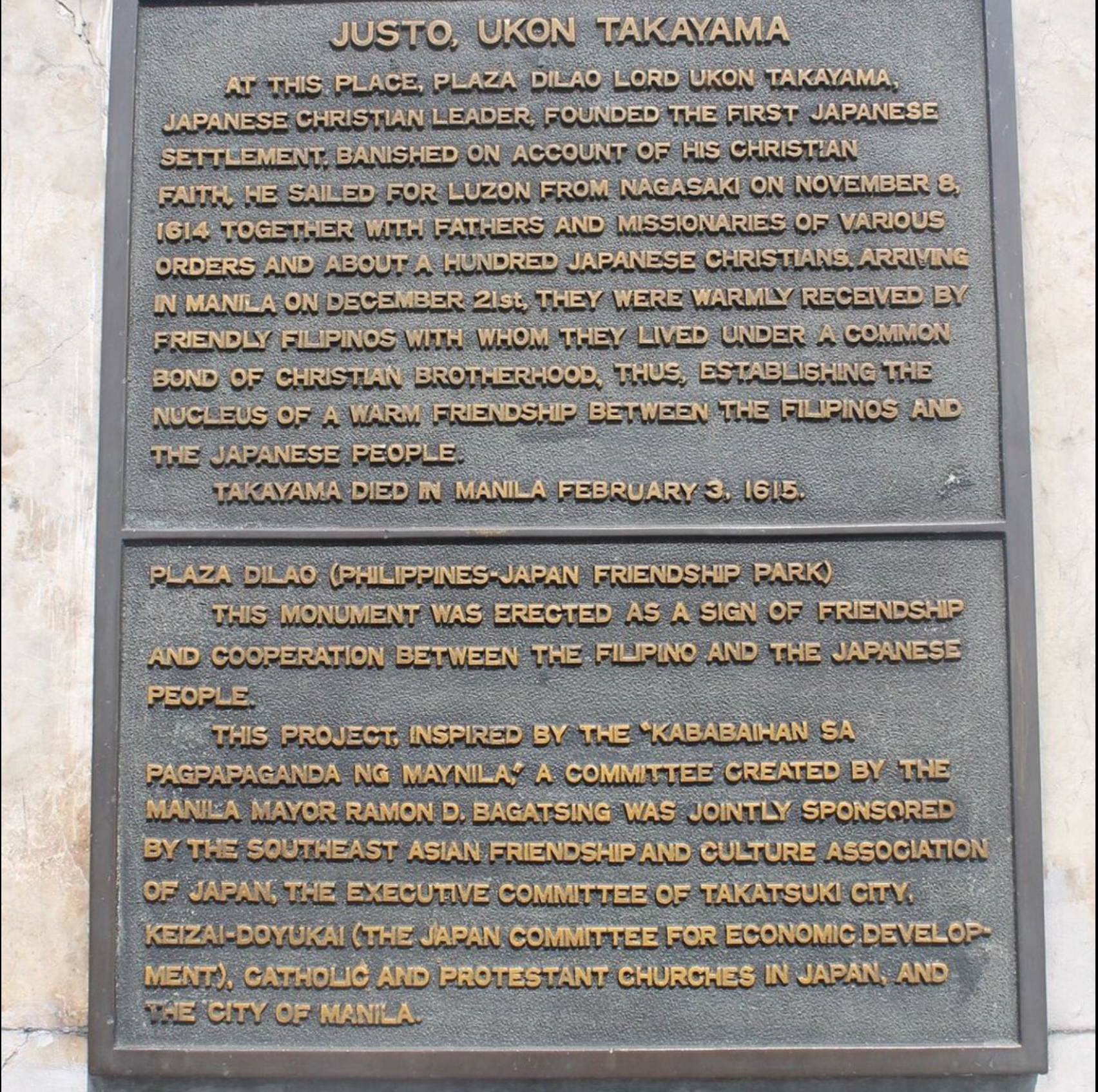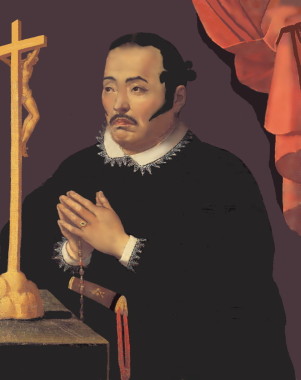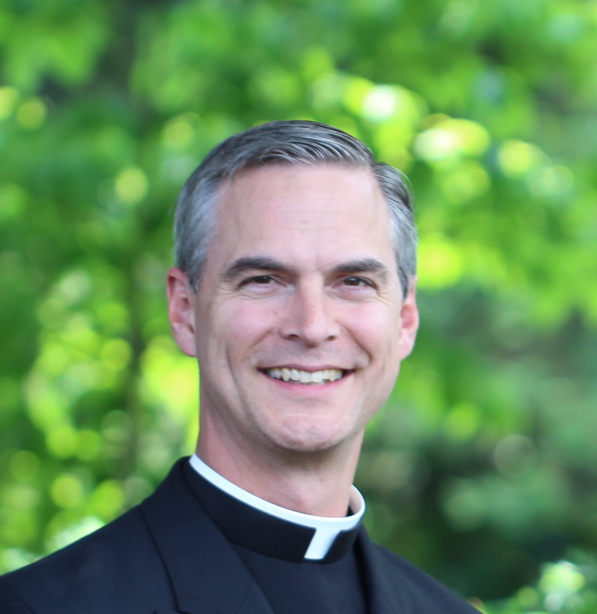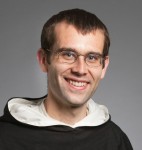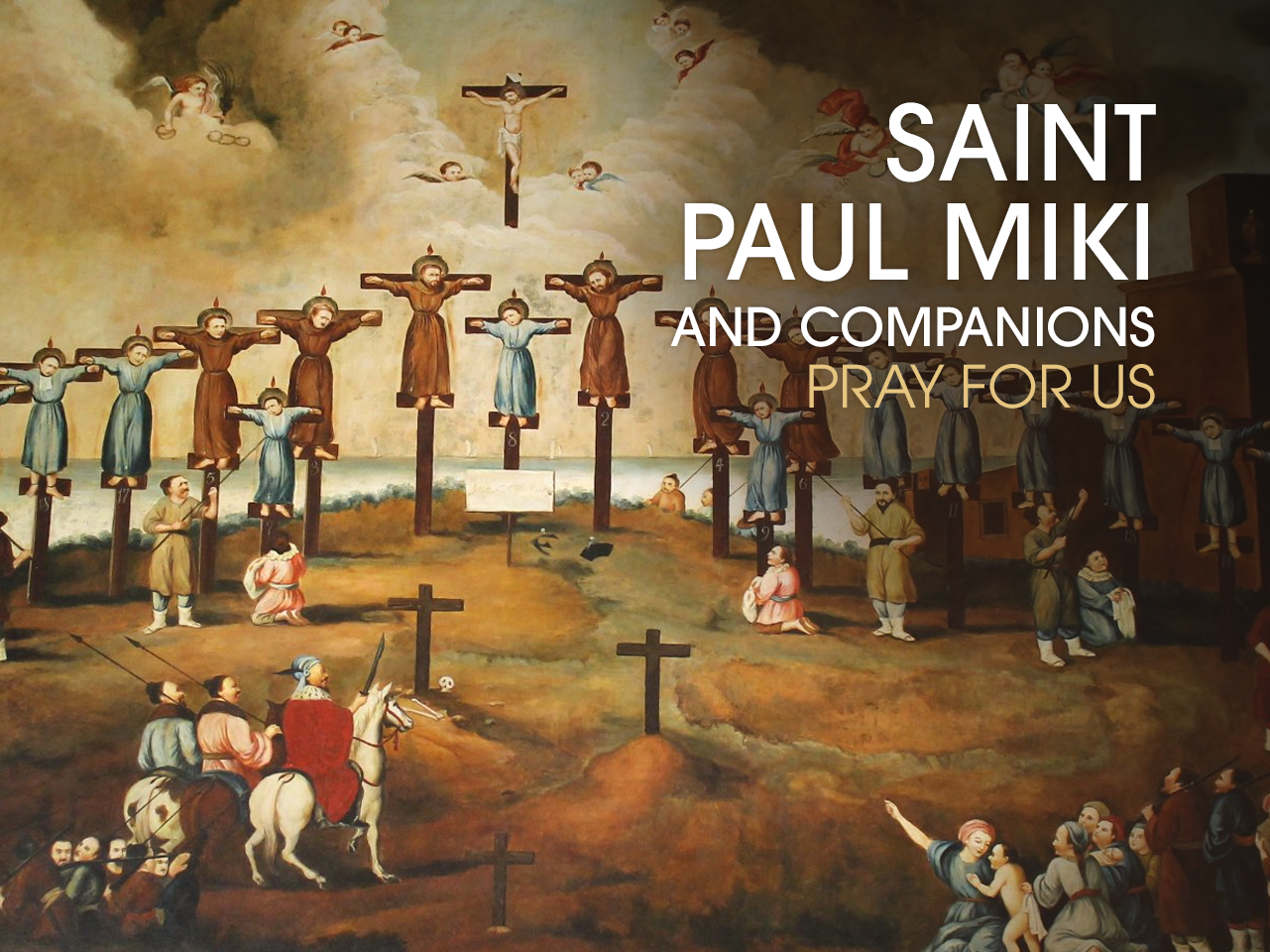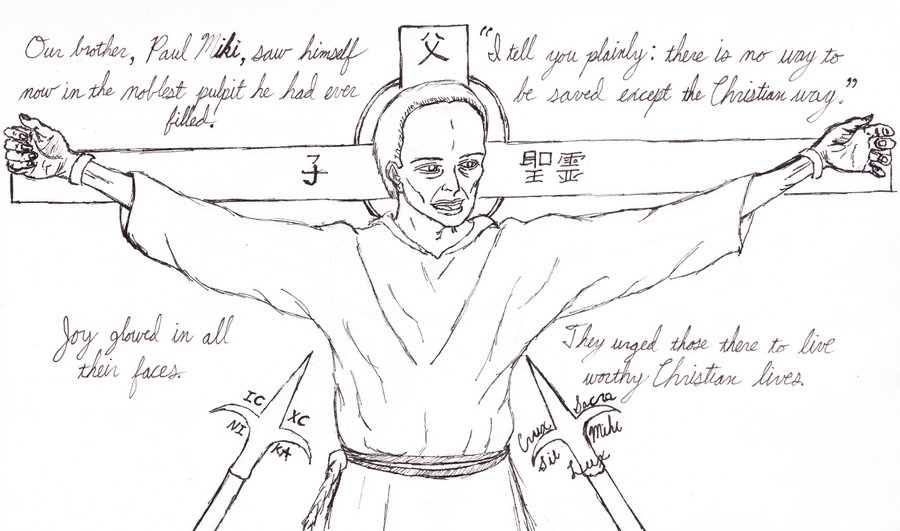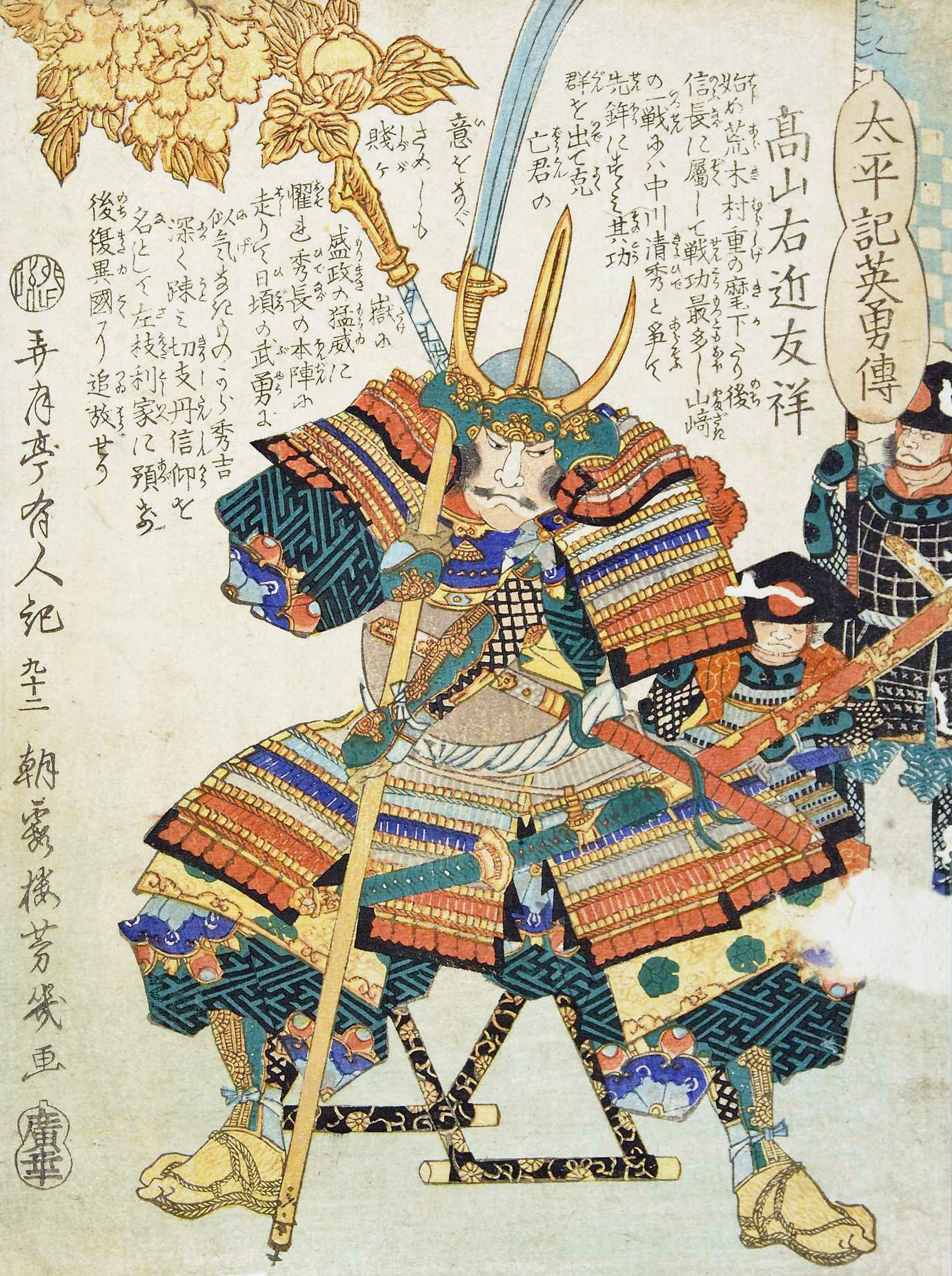
-Blessed Iustus Takayama Ukon 高山右近 Kirishitan Daimyō, please click on the image for greater detail
“The Holy Daimyo of Christ”, Blessed Justo Takayama Ukon, Martyr, was a Japanese Catholic (日本のカトリック教会) kirishitan (吉利支丹, 切支丹, キリシタン, きりしたん), daimyō, and samurai. Of the Japan’s 42 Japanese Saints and 394 Blessed, only the Cause of Blessed Takayama Ukon was processed individually – a first instance in Japanese church history. All other Japanese Saints and Blessed are group martyrs, processed by the Vatican in four batches.
Kirishitan, from Portuguese cristão, referred to Roman Catholic Christians in Japanese and is used in Japanese texts as a historiographic term for Roman Catholics in Japan in the 16th and 17th centuries. The daimyō (大名) were powerful Japanese feudal lords.
Modern Japanese has several words for Christian of which the most common are the noun form kirisuto-kyōto キリスト教徒, and also kurisuchan クリスチャン. The Japanese word kirishitan キリシタン is used primarily in Japanese texts for the early history of Roman Catholicism in Japan, or in relation to Kakure Kirishitan, Hidden Christians. However, English sources on histories of Japan generally use the term “Christian” without distinction.
Christian missionaries were known as bateren (from the Portuguese word padre, “father”) or iruman (from the Portuguese irmão, “brother”). Both the transcriptions 切支丹 and 鬼利死丹 came into use during the Edo Period when Christianity was a forbidden religion. The Kanji used for the transcriptions have negative connotations. The first one could be read as “cut off support”, and the second as “devils who profit from death”.
Portuguese ships began arriving in Japan in 1543, with Catholic missionary activities in Japan beginning in earnest around 1549, mainly by Portuguese-sponsored Jesuits until Spanish-sponsored mendicant orders, such as the Franciscans and Dominicans, gained access to Japan. Of the 95 Jesuits who worked in Japan up to 1600, 57 were Portuguese, 20 were Spaniards and 18 Italian. Fr. Francis Xavier, SJ, Fr. Cosme de Torres, SJ, and João Fernandes, SJ were the first to arrive to Kagoshima with hopes to bring Catholicism to Japan.
Takayama had been baptized into the faith in 1564 when he was twelve, though over time neglected his faith due to his actions as a samurai. He would eventually rekindle his faith just after his coming-of-age ritual near the age of 20. He abandoned his status to devote himself to his faith and was exiled to Manila, where he lived a life of holiness until his death two months later.
In 1571 he participated in an important and successful battle all as part of his coming-of-age ritual which culminated in a duel to the death with a compatriot whom he killed; but Ukon received grievous wounds in the process and during his convalescence realized he had cared little about the faith that had received him and had been imparted to him by his father, who was also so daimyo, and converted to Catholicism, having Ukon baptized at age twelve, and giving him the name Justus, or Iusto. After his coming-of-age celebration he was named as Shigetomo (重友). However he is better known as Takayama Ukon (高山右近).
But then disaster struck, initiated by the lies and boasts of the Spanish captain of the ship San Felipe. On its voyage from the Philippines to Mexico it ran into a roaring cyclone that tore off the masts and sails and dumped it on the Japanese coast – with most of the cargo and crew intact. By Japanese custom the local Daimyo looked after the crew, but the cargo was his.
When the ship’s captain was told this he responded with a lie and a threat. “You’ve seen the Spanish missionaries in Japan. Well they are the forerunners of the Spanish Army who will soon come and make Japan a colony. You will be in big trouble then if you have stolen my cargo.” This threat was relayed to Shogun Hideyoshi, the generalissimo and real ruler of Japan – the Emperor was a powerful symbol, eking out cultured boredom in a gilded cage in Kyoto.
The Shogun looked apprehensively at the Philippines and Mexico, and the seemingly unstoppable armies from Europe. This set the scene for the persecution of Christians in Japan.
The Shogun waited because he wanted to continue trade with Europeans via their ships. But early in 1597 he struck a fierce blow – a total ban on Japanese Christian and western missionaries. He now decided to terrorize every Japanese Christian and foreign missionary by public and gruesome executions in Nagasaki, where Christians were numerous. Famous Christian Daimyo Takayama would head the list of about 20, or so, missionaries and Japanese Christians to be executed.
These “criminals” would have ears sliced off, loaded into open carts and paraded around the capital city Kyoto. Then guarded by unmerciful samurai they would be forced to march to Nagasaki, 30 days away, during the coldest time of the year. There they would be fastened to crosses in mockery of this foreign Christian religion.
The local governor was ordered to make as many citizens as possible attend. Everything was to be unhurried and drawn out, to heighten the terror for both the crucified and the onlookers.
Finally the two samurai, who had been standing right under each of the crucified, with the steel tip of a lance very visible, would thrust the lance deep and up under the rib cage of the crucified. The last punishment was the refusal of burial for their corpse that would remain on the crosses until they rotted away.
The Shogun’s advisors did not oppose the gory executions but they advised the Shogun that Daimyo Takayama was too highly respected, famous throughout Japan as a man of great courage and ability, and a lover of the highest expressions of Japanese culture – the Way of the classical Tea Ceremony, Haiku poetry, fine calligraphy – and a brilliant designer of Daimyo castles.
The advisors dared not raise with lecherous Hideyoshi another reason for Takayama’s fame – his total faithfulness to his wife Justa Kuroda, in an era of sexual abandon among the powerful men of the land. His advisors suggested that crucifying Daimyo Takayama like a common criminal could cause dangerous resentment and possibly harm to the Shogun’s “great reputation”.
So Shogun Hideyoshi took Takayama off the list of those to be executed on February 6, 1597. However the merciless Shogun was angry that Takayama still lived publically as a Christian, despite the Shogun outlawing Christianity.
To backtrack some years, Sen no Rikyu, still venerated by most Japanese, was the acknowledged creator of the fully developed Japanese Tea Ceremony, “Chado”, The Way of Tea, which was fast becoming the quintessence of Japanese refinement and culture for the ruling classes. The Tea Ceremony is not like a casual cup of tea with friends.
The Tea Ceremony is conducted mostly in silence, taking an hour or more, and is acted out according to a solemn ritual full of spiritual symbols. Often when Japanese Tea Ceremony people attend Mass for the first time they will say the Mass reminded them of their much loved Tea discipline.
This famous and venerated Sen no Rikyu had publically named the young Daimyo Takayama Ukon as one of his seven “mana deshi” – “most beloved disciple” – among the many Japanese who now practised the Tea cultural expression he created. Shogun Hideyoshi, who was also a follower of this Way of Tea, of course knew Sen no Kikyu personally.
He called Rokyu to his castle, and ordered him to visit Takayama with this stern warning. “I order you to renounce your Christian beliefs. I am your liege lord. If you do not obey me you are betraying ‘bushido’, the Way of the Samurai. The whole warrior class in Japan, from the Shogun to humblest samurai, vows to follow this Way until death. Bushido demands total obedience to your liege lord. I as Shogun am your liege lord and order you to renounce this foreign religion. If you refuse to obey you are breaking the bushido vow, and will have to suffer the consequences.” The consequences the Shogun referred to was the duty of hara kiri (seppuku), the ritualistic disembowelling of oneself with a short sword.
To crafty Hideyoshi the spirited Daimyo Takayama replied immediately and masterfully, neither rejecting bushido nor his Christian faith: “I accept Shogun Hideyoshi as my liege lord on this earth. But, higher than my earthly bushido obligation is my totally absolute obligation to obey Jesus, my Divine liege Lord, the Heavenly liege Lord of all earthly lords. I cannot renounce Him from whom I have received life itself, and the promise of eternal salvation.”
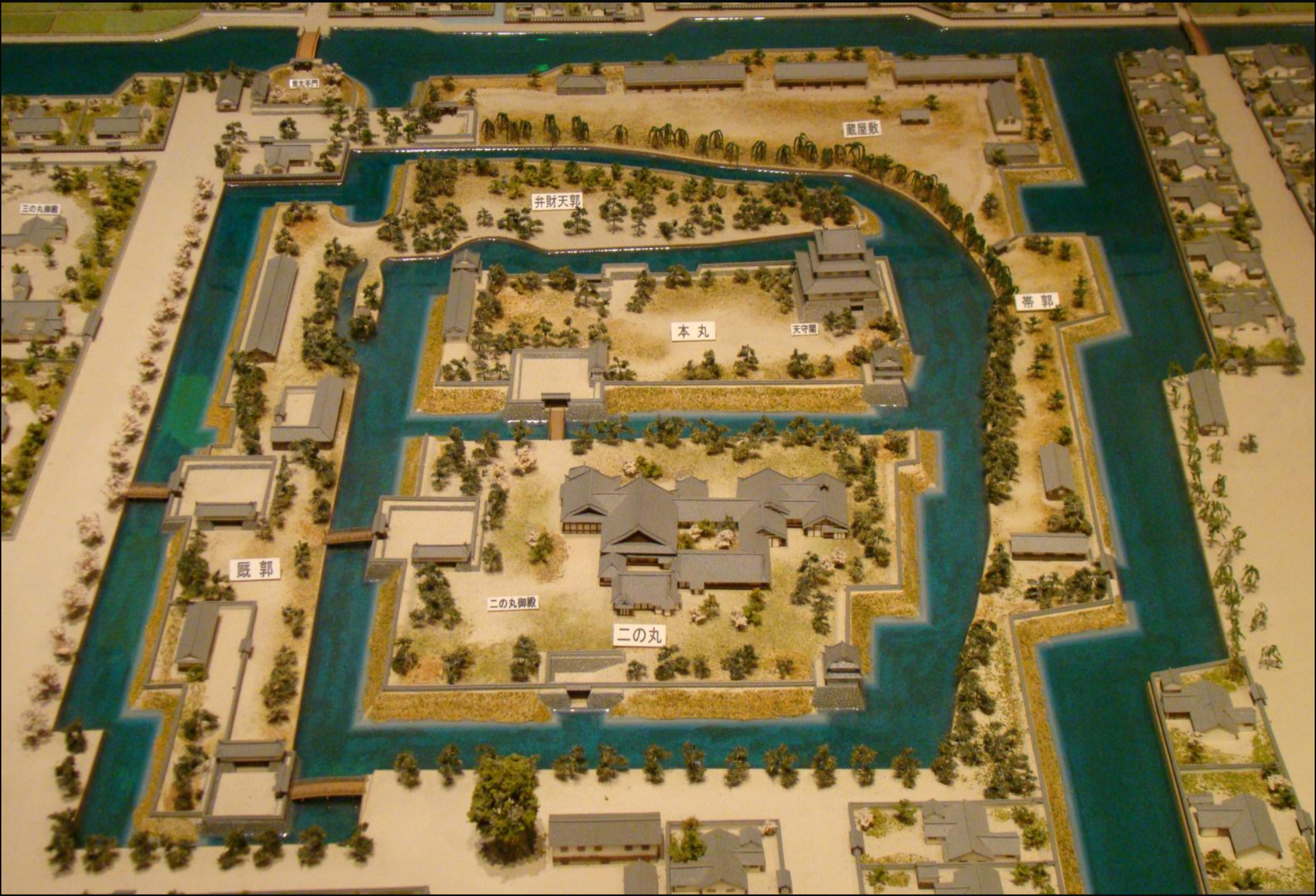
-model of Takatsuki Castle in the Edo Period, please click on the image for greater detail. The castle was founded in the 10th century AD. Takatsuki was an important commercial and transportation hub because it was between Osaka and Kyoto. The Saigoku road, which connected Nishinomiya (in Kobe) with Kyoto, went through the town as well as did the Yodo River. As a result, the castle was the largest in the Hokusetsu region of what now comprises the northern parts of the Osaka municipality. Ukon helped to develop a thriving castle town. In 1581, Takayama Ukon built a church within the castle grounds and invited missionaries to administer to the local people. There were about 18,000 Christians living in the castle town around Takatsuki Castle.
The Nagai (original patriarch, Nagai Naokiyo, gained control of the castle in 1649. The Nagai ruled for 13 generations until the end of the Edo Period when it was abandoned in 1871. This family gradually increased the size of the castle and expanded its moats outward from when it was a Sengoku period castle. The castle was about 630 meters long and 510 meters wide after the last round of expansion. Unfortunately, it was destroyed after the Meiji Restoration and the castle’s wood from buildings, and stone walls, were repurposed to build the train line between Mukomachi and Osaka in 1874. The stones of the castle were smashed into rocks to be used for the rail bed that was built to connect Osaka with Kyoto.
One of the original castle gates can still be found at Hongyoji Temple. Some Japanese castle books have also suggested that the Karamon at Nagai Shrine is an original castle gate from Takatsuki Castle. The family crest of the Nagai Clan can be seen on the water trough just inside the entrance of Nagai Shrine.
When Shogun Hideyoshi received Takayama’s reply from Sen no Rikyu he was infuriated. He ordered the immediate seizure of Takayama, his castle, lands and all his possessions, reducing him to the ignominious, lowest rank of a samurai, masterless “ronin”, whom no Daimyo could employ or shelter. Takayama, his wife and family were banished to an inhospitable area of Kanazawa in the present day Ishikawa Prefecture. Homeless ex-Daimyo Takayama first went to the Jesuit house at Arie, asking to be allowed to do a week’s retreat based on St Ignatius Loyola’s Spiritual Exercises.
Takayama was a great admirer of St Ignatius of Loyola, SJ who once was a knight. The converted Ignatius chose poverty to follow Christ. Samurai Takayama told his wife and family that they now had the opportunity to do the same for Christ. Fortified by the Ignatian retreat, and at peace, Takayama asked for the prayers of the Jesuits and then led his family to what became a hand-to-mouth existence in a hostile environment. Ukon continued to spread Catholicism.
Ukon lived under the protection of his allies for several decades but in 1614 Tokugawa Ieyasu (the new shogun, after Hideyoshi died only one year after impoverishing Ukon and his family) prohibited the Christian faith which witnessed Ukon’s expulsion from Japan.
The shogun knew ex-Daimyo Takayama was spreading Christianity in the provinces and sent a grim message to him. Takayama ignored it. Some new friends advised Takayama to save himself and his family by a “seeming” obedience to Tokugawa’s order. Takayama replied, “For a man who has a sense of honour, and is firmly convinced of his Christian religion, it is inadmissible to even speak of such cowardice.”
Shogun Tokugawa then sent samurai to arrest Takayama and bring him bound to Kyoto. There Tokugawa worked on still famous Takayama for seven months, alternating between enticements of rewards and savage death threats. Takayama remained rock solid for Christ.
On 8 November 1614, Takayama, his wife Justa Kuroda, their daughter and their five grandchildren, 350 missionaries and Japanese Christian laymen were put on a small boat and deported to Manila.
He arrived to Manila on 11 December 1614 where he received a warm welcome from the Spanish Jesuits and the local Filipinos. The governor Juan de Silva wished to provide him with an income to support him and his relations but he declined this offer since he said he was no longer in a position to offer his services in exchange for income but neither did he wish to act like a lord.
The colonial government of Spanish Philippines offered to overthrow the Japanese Empire through an invasion of Japan in order to protect the Japanese Christians and place him into a position of great power and influence. Ukon declined to participate and was even opposed to the plan. He died of illness at midnight on 3 or 5 February 1615 just a mere 40 days after having arrived in Manila after having suffered from a violent fever. Upon his death the Spanish government gave him a Christian burial replete with full military honors befitting a daimyō. His remains were buried in the Jesuit church of San Ignacio Church in Intramuros and this made him the only daimyō to be buried on Philippine soil.
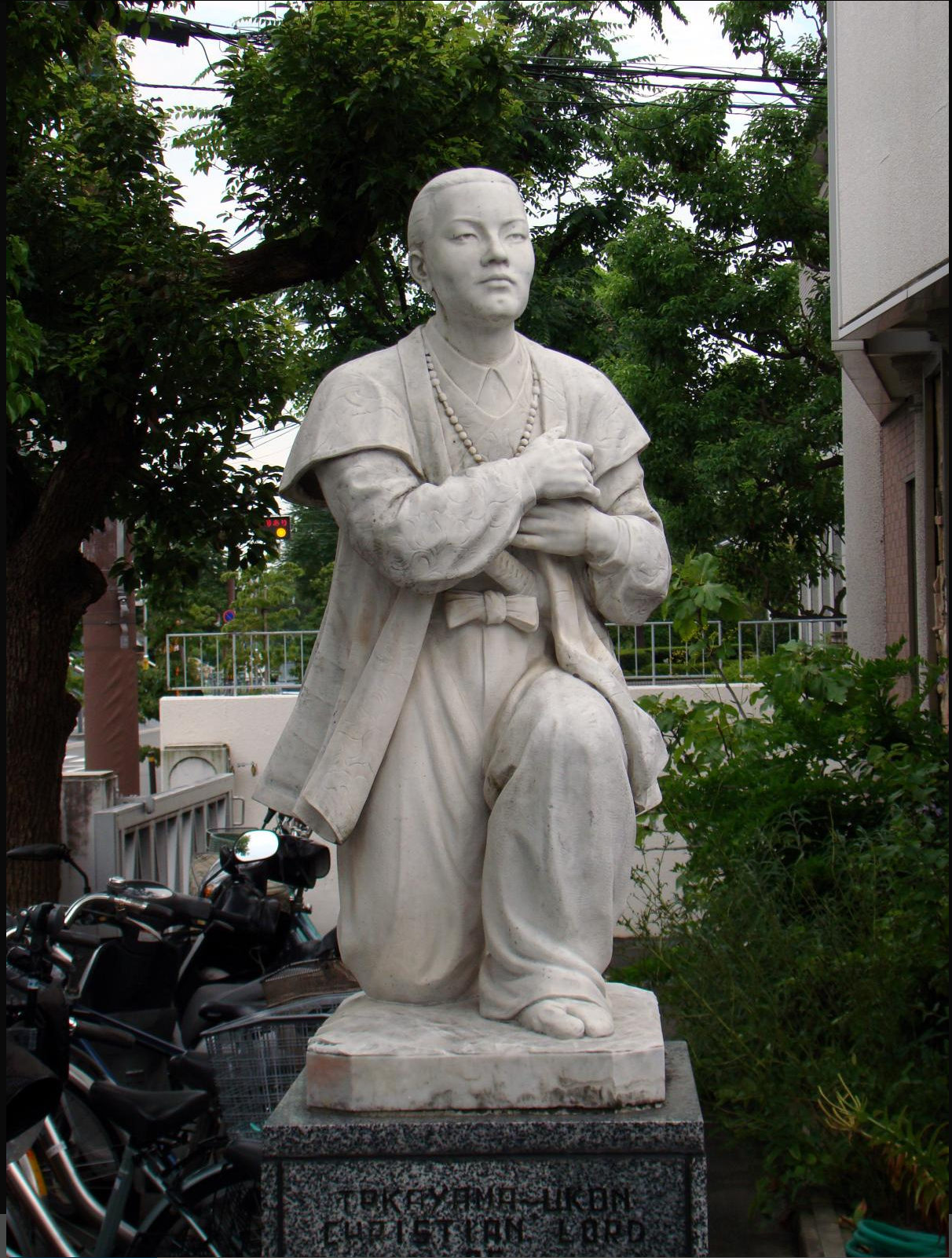
-This statue is found on the grounds of the city of Takatsuki’s functional Catholic Church, The Grand Cathedral of the Virgin Mary of Osaka, Japan. It is modeled on the cathedral outside Manila, where Takayama spent his last days. This statue is located on the cathedral grounds, near the site where the church Takayama built his original church in 1574, please click on the image for greater detail.
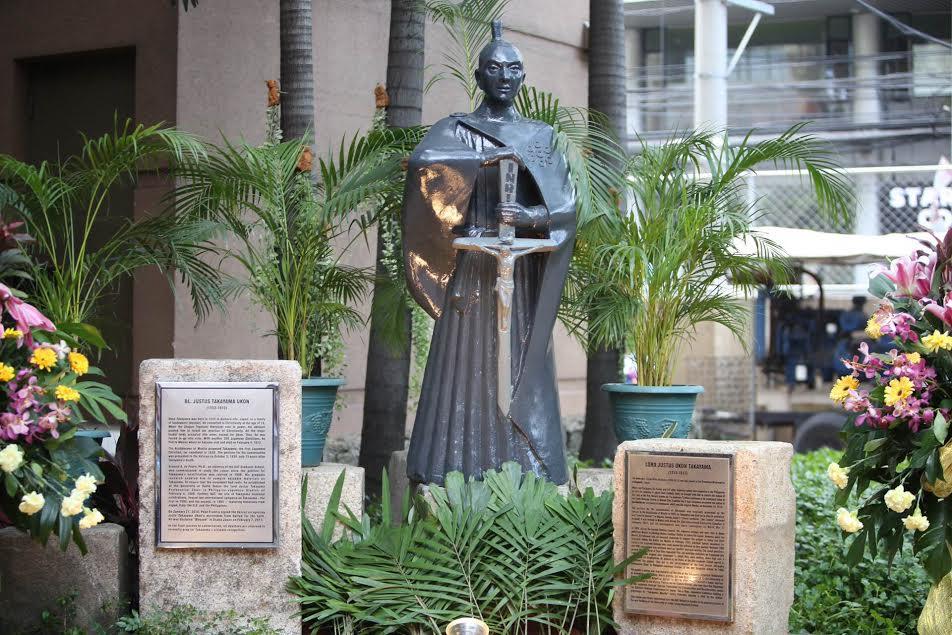
-statues of Bl Takayama Ukon in the Philippines. The first four of the same statue, and the plaque below, are in Plaza Dilao, Paco, Manila, Luzon, Philippines, and the image immediately above of one unveiled 28 March 2017, “Samurai of Christ”, Thomas Aquinas Research Center at the University of Santo Tomas, Manila, Philippines
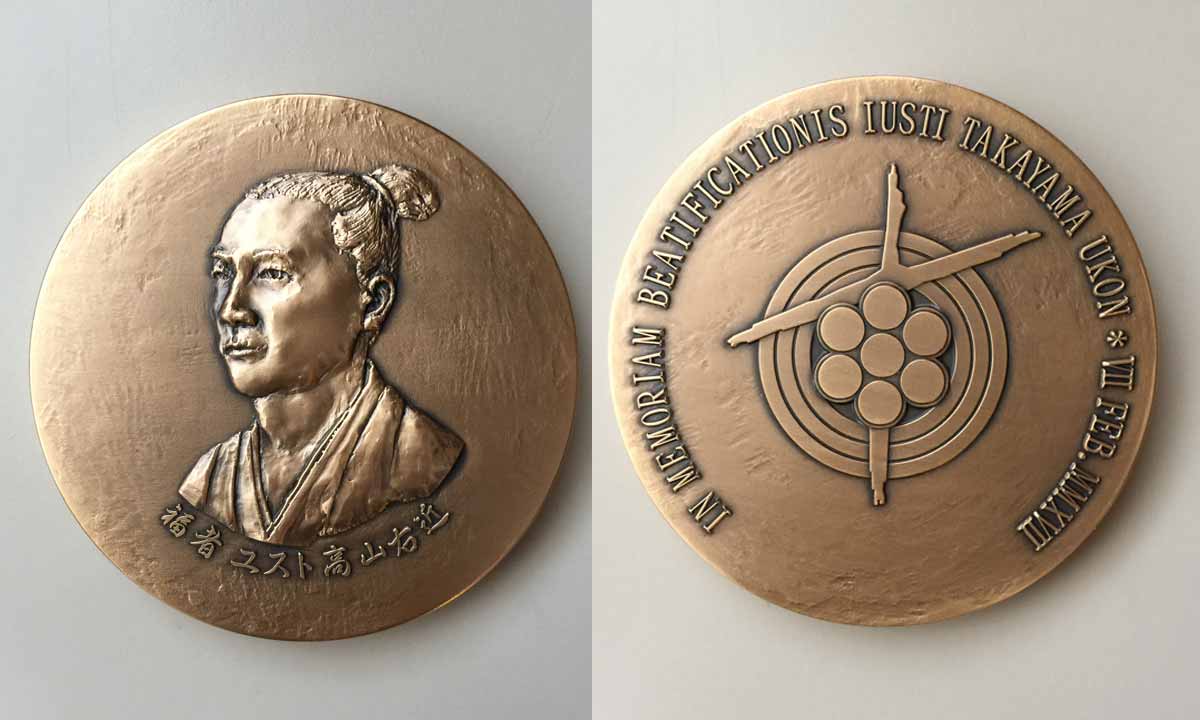
-medallion commemorating the beatification of Blessed Justo Takayama Ukon
Prayer for intercession
“O God, in Your Wonderful Providence, You have chosen Justus Ukon Takayama to be a singular promoter of Your Kingdom, and an undaunted witness to the Catholic Faith — Reward, we beseech you, his zeal for Your Glory, and graciously grant us what we humbly ask through his intercession. Grant us also that following his example, we may bravely bear all trials for the sake of our holy Catholic Faith. Through Jesus Christ Our Lord. Amen.”
Prayer for canonization
“O God, you desire the salvation of all people. Sustained by your grace, Blessed Justo Takayama Ukon followed the Gospel faithfully, and, rejecting all worldly rank and honors, achieved martyrdom by exile from his homeland.
We humbly pray, that Blessed Justo Ukon, who by freely accepting many hardships, gave powerful witness to Your love, may become a source of hope to people throughout the world, and soon be numbered among your saints.
Merciful Father, through the intercession of Blessed Justo Ukon, please hear our fervent prayers. Through Jesus Christ our Lord. Amen.”
Father Anton Witwer, SJ, general postulator of the Society of Jesus, explained in 2014, “Since Takayama died in exile because of the weaknesses caused by the maltreatments he suffered in his homeland, the process … is that of a martyr.”
Love,
Matthew

